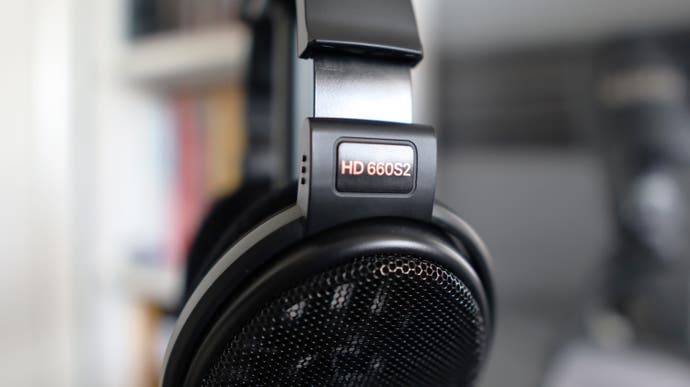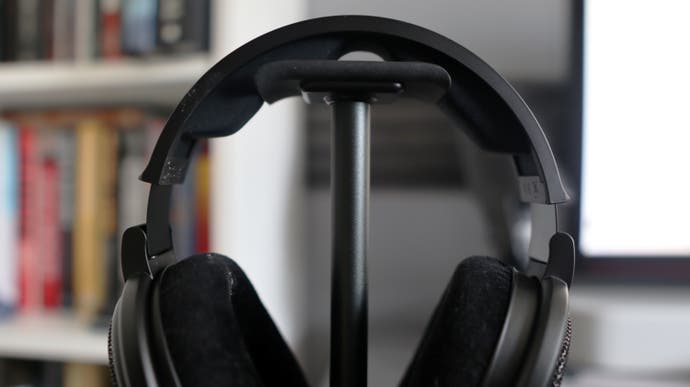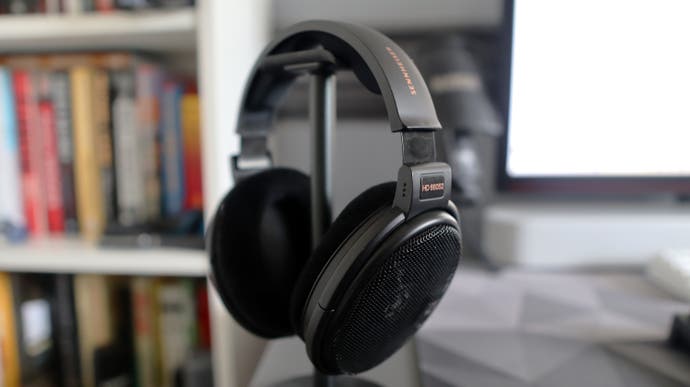Sennheiser HD 660S2 review: Legendary reference cans at a high price
A truly gorgeous aural experience - but you'll need to invest in a DAC/AMP too.
These are the latest iteration of Sennheiser's long-running HD 660 line of open-back reference headphones, the brand-new HD 660S2. They're a bit of a set of 'grail headphones', especially given their cost, which I should probably get out of the way now - it's £499 in the UK or $600 in the US. For most mere mortals, it's an incredible price, but then again, their reputation precedes them.
Sennheiser has been making the HD 600 line in one form or another since the mid-1990s, and over the course of the last 25 or so years, its design has remained largely unchanged. Of course, that's for good reason - so many professionals and audiophiles love these cans. The new HD 660S2 offers the same iconic open-back design and sturdy plastic construction that go a fair way to justifying their high-end price tag.
With this in mind, the soft, velvety padding around the earcups makes them a comfortable fit, as well as the ample padding on the headband. However, the clamping force offered by the HD 660S2s was a little tight for my liking, especially as the headband seems to be quite stiff. Their lightweight 260g frame means that they're not too uncomfortable though, and the clamping force should reduce slightly over time.

As with other open-back headphones, these let as much noise out as they do in, but this compromise delivers a wider sound stage as there's less of a physical restriction on how wide the sound can go. This can be handy for boosting perceived audio quality, although it means these headphones are designed for home use only - they let in too much noise to be used on a commute and let out too much noise to be used in an office.
As reference headphones, the HD660S2 offer as flat of a sound profile as possible, so you hear music as it was intended to be heard. Some headphones can offer more of a bassier response, while others, such as the Grado SR325xs I looked at a couple of months ago are a bit more sparkly, emphasising the top end a tad more. This true-to-life presentation makes the HD 660S2s a studio favourite, but they may not feel as vibrant or exciting as more aggressively tuned alternatives.
With this in mind, compared to previous models, the HD 660S2 offer a stronger and more robust low end, perfectly demonstrated in The Who's Eminence Front. Moreover, the Dark Side of Peter Gabriel's i/o also proved the power of the bottom end with some especially booming bass drum kicks on the song's chorus, while the intro to Daryl Hall and John Oates' Maneater is reassuringly meaty. Rush's YYZ is a favourite song of mine for testing bass, and it's an especially enjoyable listen with Sennheiser's latest cans. The bass isn't distorted or muddy here, and carries plenty of reassuring oomph to it.

The precision of the HD 660S2's presentation is also revealed with a deeper dive into its mid-range. It handles vocals excellently, as proved by James Taylor's Caroline I See You. There's a smoothness to his vocals and fingerstyle guitar that is unrivalled by any other headphones I've used, although the Grado SR325x come pretty close. Gloria Estefan's On Your Feet also proved this, with the sharp but crisp presentation of the song's synth sounds, Estefan's excellent vocals, and the horns on the song's chorus.
There is also some excellent clarity across the frequency range, with a true-to-life presentation across a wide range of genres, with everything from reggae to hard rock sounding especially crisp. Bob Marley's Could You Be Loved exemplified this, with the sharpness of the top-end cymbal hits alongside how well the HD 660S2s handled Marley's vocals and the weight of the low end, without it being overbearing. Donald Fagen's IGY sounds especially pristine, as did Steely Dan's Peg, proving that pairing quality recordings with the HD 660S2s reveals its very best.
As open-back headphones, it's perhaps little surprise to learn that the soundstage of the HD 660S2s is truly marvellous. The bongos in Earth, Wind & Fire's September are where they should be, remaining crisp and clear while almost feeling as if they're as far away from you to be in the next room. Moreover, the opening minute or so of Dire Strait's Money For Nothing also provided plenty of space for the competing synth and drum elements to breathe and thrive, before the power of Mark Knopfler's guitar drive revealed that the HD 660S2s carry plenty of power with them, too.

All of the above also combines to make the HD 660S2s an amazing set of headphones for gaming, too. The extra space and amazing soundstage afforded by these being open backs allow them to offer one of the most immersive experiences I've had when playing Forza Horizon 5 for a long time, while the more robust low-end made playing some rounds of CS:GO an absolute joy, even if I've never been the best at the game itself.
The only issue I've got with the HD 660S2s is how powerful the things are to run. Of course, as headphones designed for home listening with DACs and amps, it's probably no surprise that you can't just bung them into your PC, or your phone, and expect them to work. These headphones have an impedance of 300 ohms, which for context is an order of magnitude more than the 38-ohm Grados headphones I mentioned earlier. This means you will need a DAC or amp to run them fully, and these can get costly - for reference, the Chord Mojo 2 I'm using here costs as much as the HD 660S2s do, and then we're pushing into four figures in terms of price.
Yes, they're hideously expensive, and in the current climate, it doesn't really seem right to recommend a set of £500/$600 headphones for everyone to try. However, that high price means the HD 660S2s are really only meant for the most professional of users who can get the most out of them. They really are some of the best headphones money can buy if you're wanting a true-to-life, warm sound that's also immensely precise, making them a real treat for games and music alike. You'll just have to watch out for that tight fit and heavy clamping force, which will take some getting used to.









